Most scientific studies of sea turtles are conducted on nesting beaches where females come ashore to lay their eggs. However, the Bermuda Turtle Project is an in-water project in which turtles are captured in their marine environment in order to learn more about their complex life histories. The Bermuda Turtle Project has assembled important data sets on size and maturity status, growth rates, sex ratios, residency, site fidelity, genetic diversity, and movement patterns in immature green turtles in Bermuda waters. We have assembled similar, but much smaller, data sets for Bermuda hawksbills. Our findings show that Bermuda serves as a year-round habitat for immature green turtles and hawksbills, providing a ‘developmental’ feeding ground for nesting beach populations that are located mostly in the Caribbean, but may exist as far away as Cyprus in the Mediterranean.
This project provides the unique opportunity to follow immature green turtles as they depart a developmental habitat. Over 3,500 immature green turtles have been captured on the seagrass flats with nets and tagged in Bermuda since the project began in 1968. Green turtles in Bermuda range in size from approximately 25 to 75 centimeters in shell length, with no recent records of adult turtles. Long-distance tag returns indicate travel south to feeding grounds in the Caribbean Sea. Starting in 2011, GPS satellite tracking units have been used to study the fine-scale movements of presumed resident turtles to learn more about how they use the habitat, what their daily and seasonal behaviors are.
The Bermuda Turtle Project is a collaborative effort of the Bermuda Aquarium, Museum and Zoo and the Sea Turtle Conservancy. Anne Meylan (Florida Marine Research Institute – Florida Fish & Wildlife Conservation Commission) and Peter Meylan (Eckerd College) serve as the project’s Scientific Directors. For more information on the Bermuda Turtle Project, check out the Bermuda Turtle Project section of STC’s website.
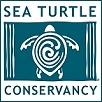
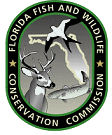
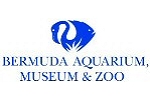

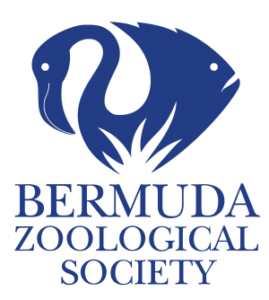
Click on the turtle’s name to see a map of its movements.
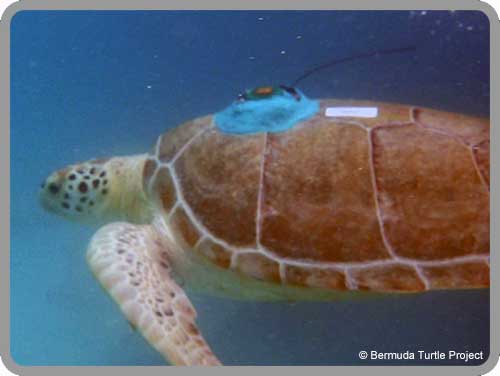

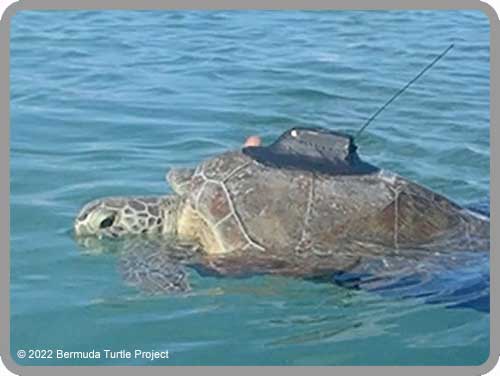
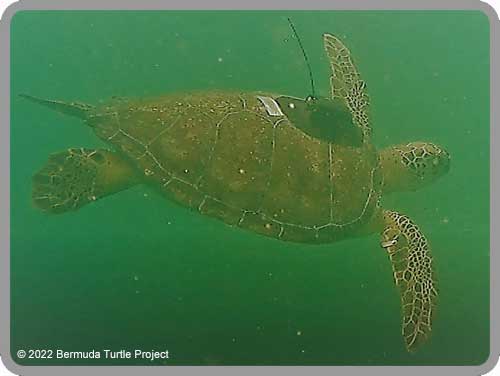
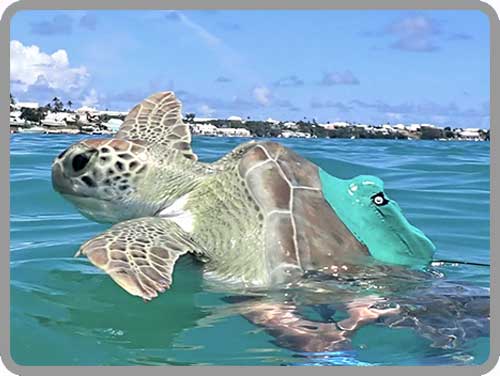
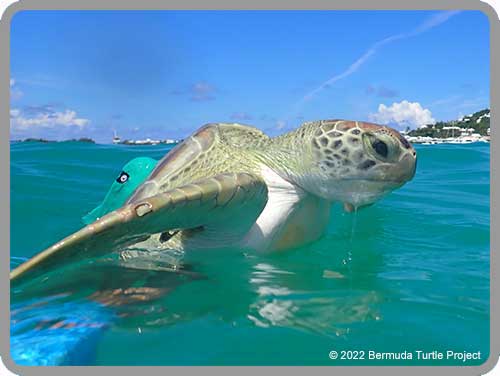
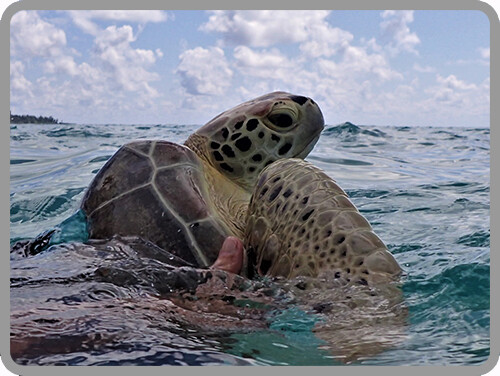
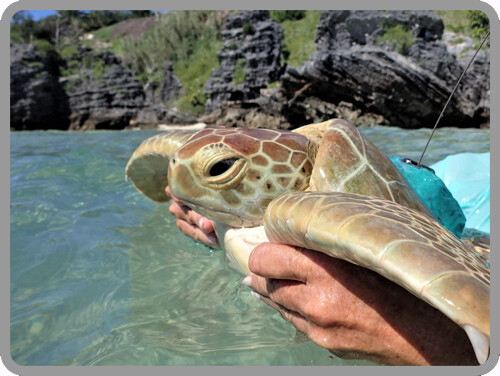
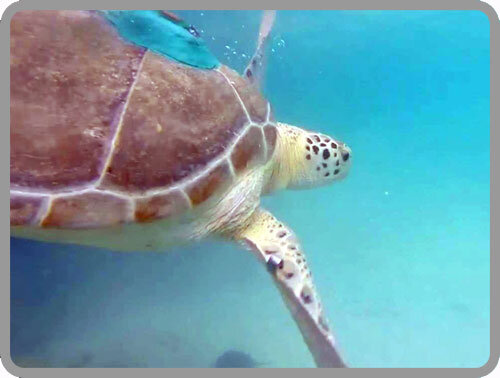
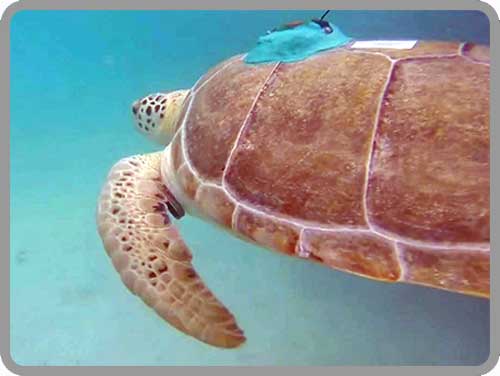
2016 Turtles
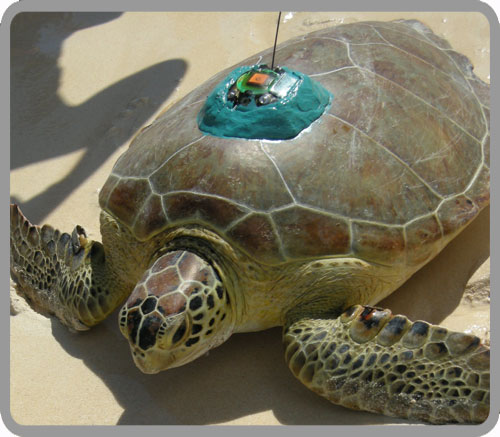
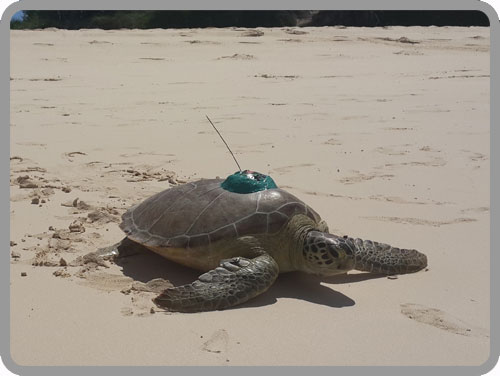
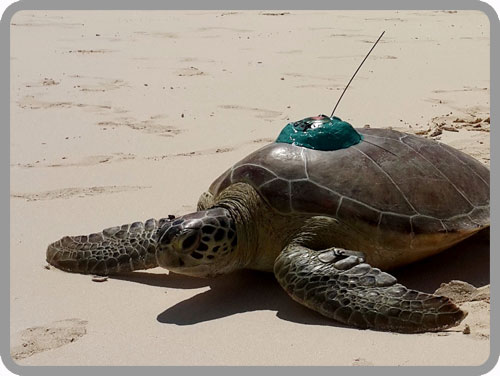
2015 Turtles
SEA VENTURE – Sea Venture is a juvenile green sea turtle caught in Fort Saint Catherine, Bermuda. He has not been previously captured. Sea Venture measured 61.0 cm straight carapace (shell) length and was released with a satellite transmitter on August 14, 2015.
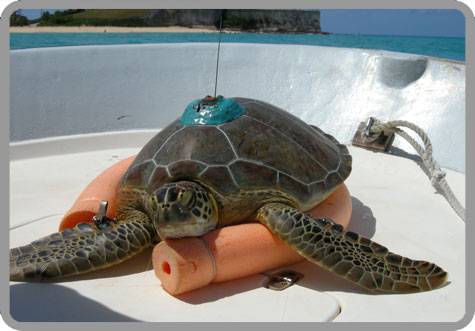
RENAISSANCE – Renaissance is a juvenile green sea turtle caught in Wreck Hill, Bermuda. He measured 66.5 cm straight carapace (shell) length and was released with a satellite transmitter on August 17, 2015.
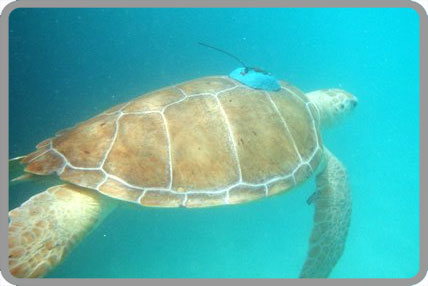
2014:
KIRSTY – Kirsty is a juvenile green sea turtle caught for the first time in Somerset Long Bay, Bermuda. She measured 66.8 cm straight carapace (shell) length and was released with a satellite transmitter on August 8, 2014.
RIFFLE – Riffle is a juvenile green sea turtle caught in Wreck Hill, Bermuda. He had been captured once before in August 2001. Riffle measured 63.9 cm straight carapace (shell) length and was released with a satellite transmitter on August 11, 2014.
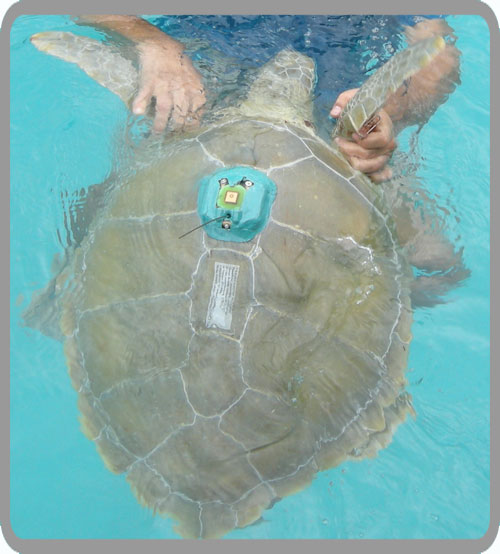
2013:

2012:
ARCHIE – Archie is a juvenile green sea turtle caught at Wreck Hill, Bermuda. He measured 59.1 cm straight carapace length. He was previously captured by researchers in 2002 and 2004, and was released with a satellite transmitter in August 10, 2012. Archie’s transmitter was sponsored by Sea Turtle Conservancy.
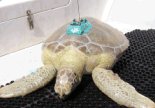
CATHERINE – A juvenile green sea turtle caught at Ft. St. Catherine’s, Bermuda, measuring 54.5 cm straight carapace length. Previously captured by researchers in 2010, and released with a satellite transmitter on August 8, 2012. Catherine’s transmitter was sponsored by Bermuda Department of Conservation Services.
CHUBBY – Chubby is a juvenile green sea turtle caught at Chubb Head, Bermuda, measuring 50.0 cm straight carapace length. He was released with a satellite transmitter in July 30, 2012. Chubby’s transmitter was sponsored by Bermuda Department of Conservation Services.
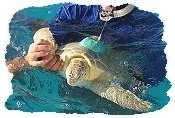
FRIPPER – Fripper is a juvenile green sea turtle caught at Annie’s Bay, Bermuda, measuring 59.1 cm straight carapace length. He was previously captured by researchers in 2003, 2005 and 2011, and was released with a satellite transmitter on August 14, 2012 from Clearwater Beach, Bermuda. Fripper’s transmitter was sponsored by RenaissanceRe.
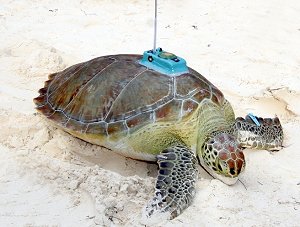
TUCKER – Tucker is a juvenile green sea turtle caught at Wreck Hill, Bermuda. He measured 63.4 cm straight carapace length and was released with a satellite transmitter in August 10, 2012. Tucker’s transmitter was sponsored by Bermuda Department of Conservation Services.
2011:
IAN – Ian, a 65.5 cm juvenile green sea turtle, was captured with an entanglement net and satellite-tagged by the Bermuda Turtle Project on August 3, 2011 at Blue Hole, Bermuda. Ian had been caught three times before, in 2003, 2007 and 2010, at Blue Hole. The site, Blue Hole, is a seagrass bed off of a nature park that fronts Castle Harbor. It is one of the sites that has been set by the project since 1978. This is one of Clay’s original study sites and it is one monitored at least once every year. Researchers believe that these immature greens in developmental habitat remain more-or-less in the same area for many years, in this case 8 years so far. The turtles was named after Dr. Ian Walker, Principle Curator of the Bermuda Aquarium, Museum and Zoo.
TIMMY – Timmy, a 48.4 cm straight carapace length juvenile green sea turtle, was captured with an entanglement net and satellite-tagged by the Bermuda Turtle Project on August 11, 2011 at an area called The Vixen, Bermuda. The turtle was named after Tim Hasselbring, the captain of the RV Endurance (the project’s main research vessel). She had been caught twice before, in 2004 and 2007, also at The Vixen.
2006:
BERMEYLAN – Bermeylan, a 28.5-inch immature green turtle, was captured with an entanglement net and satellite-tagged by the Bermuda Turtle Project on July 24, 2006, at Ferry Reach in Castle Harbor, Bermuda. The turtle had originally been tagged at this same site nearly a year prior, on August 5, 2005. Although the turtle is the approximate size at which green turtles typically depart from Bermuda and travel to feeding grounds in the Caribbean, the exact timing of the turtle’s eventual departure is unknown. The turtle may remain in Bermuda for months or even years, likely at the same site where the two captures took place. It is hoped, however, that Bermeylan will make a departure while the batteries for the satellite transmitter are still working, so that we can observe the route of travel and final destination. A previously tracked Bermuda turtle, “Bermudiana”, traveled from Bermuda to the eastern end of Cuba where she was captured (see Bermudiana track). Bermeylan was named by the participants of the International In-water Course on the Biology and Conservation of Marine Turtles which took place in Bermuda from 17 to 28 July 2006.
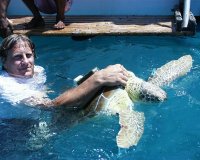 VIXEN – Vixen is a female green turtle 71.8 cm in straight carapace length. She was first captured in Bermuda on grass beds off the west end of the island on June 13, 1997 when she was 56.4 cm in length. Her second capture was on August 7, 2003 when she was caught at a site called The Vixen, just east of her original site. The site is named after a shipwrecked vessel whose bow is still visible above the water’s surface. The turtle’s sex was determined by the hormone content of a blood sample. A genetic sample taken in 2003 will help to determine the nesting beach where she was born. Vixen is at the upper end of the size range of green turtles found in Bermuda, and it is hoped that the satellite transmitter (#11677) will document her migration to a feeding ground elsewhere in the Caribbean. The majority of recaptures of turtles tagged in Bermuda have been made off the eastern coast of Nicaragua.Vixen was satellite-tagged during a regular sampling session of the Bermuda Turtle Project. Drs. Peter and Anne Meylan, scientific directors for the project, and Jennifer Gray, project coordinator, were assisted in attaching the transmitter by students participating in the 5th International Course on Sea Turtle Biology and Conservation. The nine students taking the course this year are from Anguilla, the British Virgin Islands, the Cayman Islands, Grenada, St. Lucia, the Turks & Caicos Islands and the United States.NOTE: No points are posted on Vixen’s map for nearly the first month after the release of Vixen because of a transmitter malfunction. During this period, no dive data were received, and the locations were erratic. Fortunately, the unit started to transmit normally on September 5, 2003.
VIXEN – Vixen is a female green turtle 71.8 cm in straight carapace length. She was first captured in Bermuda on grass beds off the west end of the island on June 13, 1997 when she was 56.4 cm in length. Her second capture was on August 7, 2003 when she was caught at a site called The Vixen, just east of her original site. The site is named after a shipwrecked vessel whose bow is still visible above the water’s surface. The turtle’s sex was determined by the hormone content of a blood sample. A genetic sample taken in 2003 will help to determine the nesting beach where she was born. Vixen is at the upper end of the size range of green turtles found in Bermuda, and it is hoped that the satellite transmitter (#11677) will document her migration to a feeding ground elsewhere in the Caribbean. The majority of recaptures of turtles tagged in Bermuda have been made off the eastern coast of Nicaragua.Vixen was satellite-tagged during a regular sampling session of the Bermuda Turtle Project. Drs. Peter and Anne Meylan, scientific directors for the project, and Jennifer Gray, project coordinator, were assisted in attaching the transmitter by students participating in the 5th International Course on Sea Turtle Biology and Conservation. The nine students taking the course this year are from Anguilla, the British Virgin Islands, the Cayman Islands, Grenada, St. Lucia, the Turks & Caicos Islands and the United States.NOTE: No points are posted on Vixen’s map for nearly the first month after the release of Vixen because of a transmitter malfunction. During this period, no dive data were received, and the locations were erratic. Fortunately, the unit started to transmit normally on September 5, 2003.BERMUDIANA – Bermudiana , a 31-inch immature green turtle, was captured with a net and satellite-tagged by the Bermuda Turtle Project on August 5, 1998 on the seagrass beds off the northwestern end of Bermuda. She was the second-largest green turtle that has been handled by the project since it began in 1968, and thus, it was expected that she would soon be departing the Bermuda platform. About two weeks later, she did, in fact, depart and embarked on a south/southwestward course that took her to the north coast of the Dominican Republic – a journey of approximately 1500 km – in a little less than a month! She then took a westward course along the northern coasts of the Dominican Republic and Haiti and was in this area when Hurricane Georges passed by. There were no observable effects of the hurricane. Several days later, however, satellite transmissions were disrupted, and when they resumed, sensors indicated that the turtle was no longer diving. At that time, the turtle was located right off the eastern tip of Cuba. Several location signals were then received slightly inland, near the town of Baracoa, and we suspect that the turtle was captured.
For general information on sea turtles and coastal habitats, check out the Sea Turtle Information section of STC’s website.
Support for this satellite tracking research was provided by Sea Turtle Conservancy, Bermuda Aquarium, Museum and Zoo, Bermuda Zoological Society, Bermuda Division of Fisheries, RenaissanceRe, Turtle & Hughes, Inc, Florida Fish and Wildlife Conservation Commission, and Eckerd College. Thanks are due to the staff and volunteers of the Bermuda Aquarium for assistance in the field. Robert Hardy, Kerri Powell, Andrea Mosier, and Dan Evans kindly assisted with mapping the data.